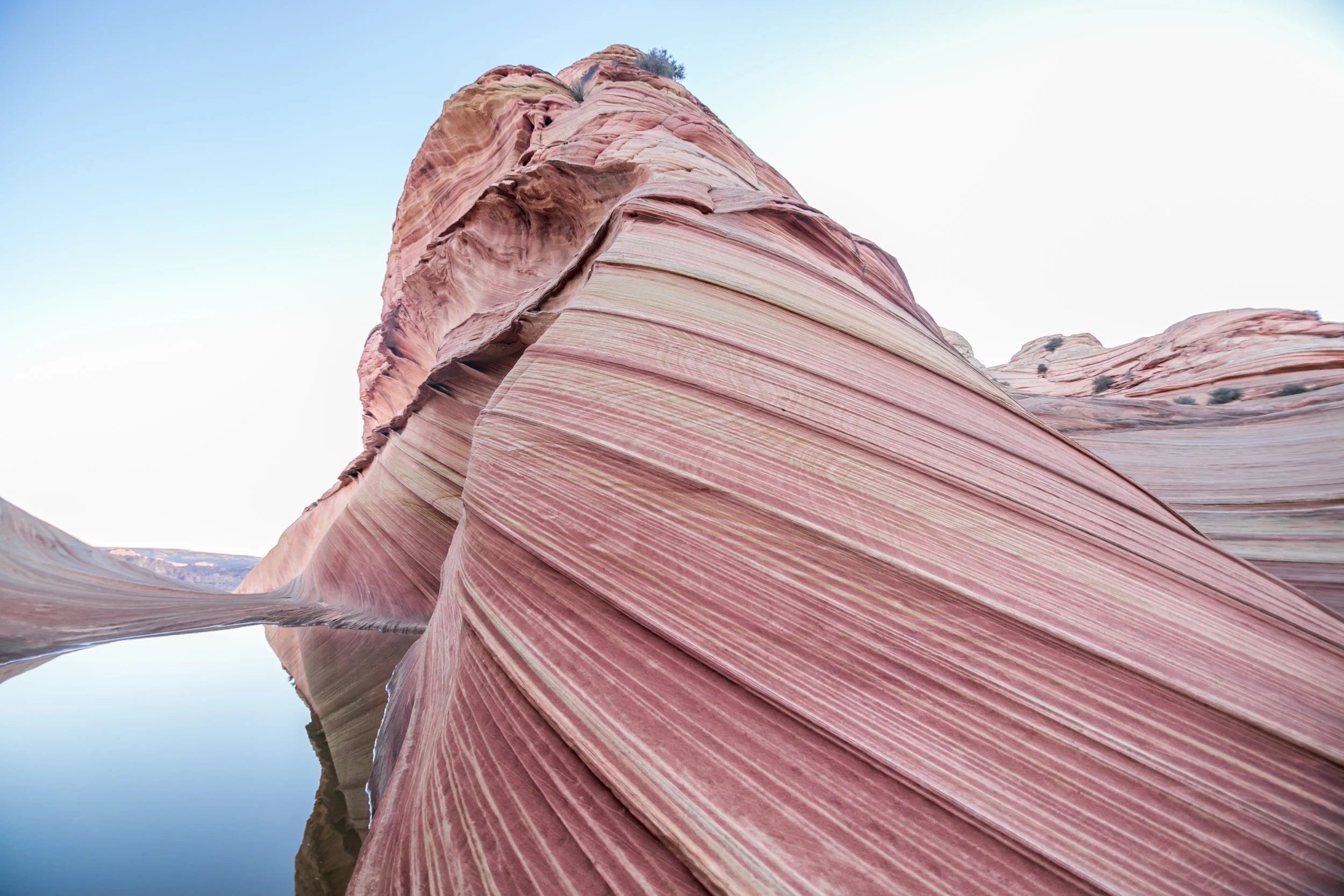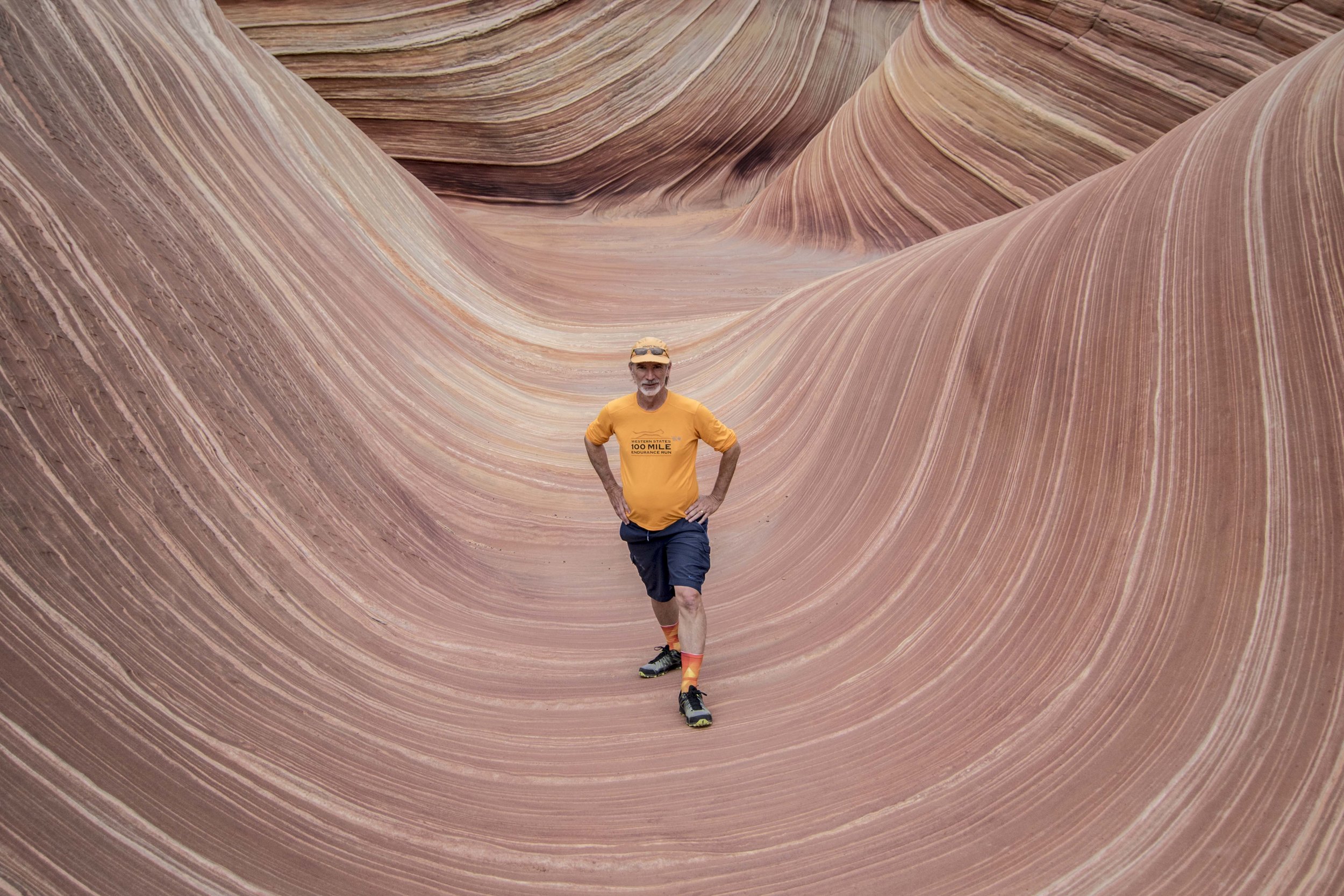I gingerly place my feet on the ground and shift my weight onto my right leg. A polite ache flares across the outside arch—an amiable three out of ten this morning, and that’s without chemical diplomacy. Earlier this week that same spot was a constant sulking six or seven, even under a gram of naproxen.
“Earlier this week” is when I had just wrapped up a forty-three-mile, all-night wander through the Superstition Mountains - just one line in a two-week, 500-mile poem strung along the Arizona Trail. Why? First, because I love hiking and being outside. Second, because I was trying to break the speed record for the fastest unsupported completion of the entire 800 mile Arizona Trail.
I’m no stranger to endurance efforts. I’ve set speed records around the Annapurna Circuit, on Aconcagua, and in the Grand Canyon, amongst other places. In 2024 I became the first woman to complete the 1000 Mile Iditarod Trail Invitational in Alaska on cross-country skis. I spent the better part of a decade earning my chops as an ultra runner with 100 miles finishes at races like Western States and the Ouray 100, and I earn my living as a mountaineering and backpacking guide living in close proximity to the Arizona Trail’s northern terminus. So it seemed only natural for me that I’d want to try my hand at a speed record on the trail, and, in fact, this wasn’t my first rodeo: I’ve tried twice before.
My first attempt, in the fall of 2023, was a supported effort — I had crew, pacers, no need to carry anything other than a light layer and some snacks and water, and I was trying to go FAST; 50-miles-a-day type of fast. That worked for a couple of days, until it didn’t: I sustained a stress fracture on Day 4, and eventually admitted defeat and stopped running (or rather, hobbling) on Day 7 after 309 miles.
My second attempt came in the fall of 2024; this time I was emboldened by my success on the Iditarod Trail and inspired by legendary speed hiker Heather Anderson (Anish) who had just nabbed the outright unsupported record at 24 days 1 hour and 12 minutes, so I decided to try the unsupported style. That meant I would carry all my food and gear for the entire length of the trail: 800 miles with no resupplies, save for water refills from natural sources and public spigots. Anish’s record translates to right around 33 miles per day; I was optimistic that I could develop a strategy to cover more ground each day than that, even loaded with gear and food for 800 miles.
How did that attempt go? My pace and fuel strategy were on par, but my head wasn’t in it - at all. When I saw the lights of Flagstaff after 200+ miles and a cold, dark, lonely week on the trail, the only thing I wanted to do was go home; so that’s what I did. (You can read more about that decision here).
I wasn’t sure at the time if I’d ever want to try again, but weeks passed, my fortieth birthday drew closer, and the trail’s siren call kept slipping into conversations that I had with myself. So I decided to make time for a third attempt as a birthday present: spring instead of fall, warm sun instead of frost, longer daylight, less premeditated storytelling around it all. Yet even as I carefully packed my gear and once again prepared food for 800 miles, I couldn’t tell whether I was chasing closure or genuine desire.
But for fifteen days and nights the trail and I traveled well together. My kit weight shrank with every meal, my pace held steady, and, most precious: I felt unrushed and present. My solar panel went on strike within the first few days which quickly meant no earbuds, no podcasts, no music. Instead, time in my head and with memories that I rarely get to see, with my dead parents and the long-lost peace of loving childhood moments, set to the backdrop of birdcall, footsteps and the whisper of the wind. Somewhere south of Pine, though, a few unseasonably rainy days translated into damp and dirty socks which, paired with a long and rocky downhill, brewed mild trench foot and eventually a deep blister that then turned ugly. By the time infection started whispering threats, I tried everything I could - from rest to minor surgery to medication - but I finally had to bow my head and hiked out, catching the ride home I’d hoped not to need.
Which brings me back to this morning’s tentative step on my healing injury: a reminder and a souvenir.
I returned home with a surprise gift wrapped inside the low-grade disappointment having learned, beyond doubt, that I wanted to be out there and that I still can and want to do hard things. I was strong, I was moving well, but more importantly I was at peace and where I was supposed to be—fully present in a way that I find hard to hold on to in daily life. The Arizona Trail welcomed me with open arms this time, offering a chair at the table of my better self. I hiked for days without being distracted by my phone or songs or podcasts, and I felt myself returning closer to the best version of myself with every mile I walked.
My biggest regret is not that I didn’t manage to break the speed record or even complete the trail. Instead, it’s that a seemingly small carelessness - dirty socks in warm wet weather with big downhill miles - spiraled into a soft tissue injury that cut short my immersion in that sweet bliss of presence and alignment that the trail gave me for my birthday.
Here’s the irony: three exits in three tries, yet I believe more than ever that I can break the unsupported record, all while realizing fully well that confidence without evidence grows thinner with repetition - and so does my credibility.
But the speed record also isn’t really what I am after; it’s the mindful presence and alignment that I mentioned earlier. Why try for a speed record at all then? Because what I really crave is that sanctity of the convergence of effort, uncertainty, and accountability where the mind goes quiet. A speed attempt is simply the most direct doorway I’ve found.
So: has the Arizona Trail already given me everything I came for, or do I have unfinished business?
All I can say is ‘Yes’.
With big adventures like this one on the Arizona Trail, I am raising funds to help create transformative outdoor opportunities for women and girls and support get OTHER women into the outdoors. If you enjoyed reading this article, please make a donation here.













